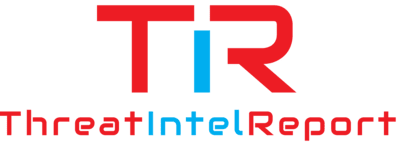On May 1st, 2024, Simone Veil Hospital in France became the latest target of a cyberattack by the notorious LockBit ransomware group. After the hospital refused to comply with the ransom demands, the cybercriminals retaliated by leaking confidential data stolen during the attack. This breach highlights the continuing threat posed by ransomware to healthcare institutions and the increasing boldness of cybercriminal groups like LockBit in their extortion strategies.
The Attack: LockBit’s Strategy
LockBit has made a name for itself as one of the most active ransomware-as-a-service (RaaS) groups. Its business model is simple: lock critical systems or steal sensitive data and demand a ransom in exchange for unlocking files or withholding the release of the stolen information. In the case of Simone Veil Hospital, the attackers demanded a ransom after exfiltrating sensitive hospital data. However, when the hospital refused to meet these demands, LockBit followed through on its threat to publicly release the stolen information.
This attack mirrors a broader trend where cybercriminal groups target critical infrastructure and public service providers, exploiting the high stakes in healthcare settings where disruptions can endanger lives. For the attackers, healthcare institutions like Simone Veil Hospital are lucrative targets, as their sensitive patient records and operational dependencies on IT systems make them particularly vulnerable to extortion.
Impact of the Data Leak
The leaked data reportedly includes sensitive patient information, staff records, and possibly other confidential files. While the exact scope of the breach has not been fully disclosed, the fallout from the leak could have severe repercussions for both patients and hospital staff. In addition to privacy concerns, leaked medical records can facilitate identity theft, fraud, and further targeted cyberattacks.
For healthcare providers, these incidents not only cause reputational damage but also raise significant legal and regulatory concerns. Under European GDPR rules, institutions face heavy penalties if they fail to protect personal data adequately. The hospital is likely under investigation to determine if it complied with the necessary cybersecurity measures.
LockBit: A Persistent Threat to Healthcare
LockBit’s modus operandi has proven highly effective in recent years. The group uses advanced tactics like double extortion, where they not only lock an organisation’s systems but also steal sensitive data and threaten to leak it if their demands aren’t met. In some cases, they employ even more complex methods such as T1486 – Data Encrypted for Impact, which ensures that victims are locked out of their critical systems, making recovery without paying the ransom nearly impossible.
LockBit’s affiliates are also known to exploit vulnerabilities in systems and engage in phishing attacks, often relying on techniques like T1566.001 – Spearphishing Attachment to gain initial access. Once inside a network, they often use lateral movement techniques such as T1071.001 – Application Layer Protocol to exfiltrate sensitive data and prepare for ransomware deployment.
Prevention and Mitigation: Lessons for Healthcare
This incident at Simone Veil Hospital serves as a stark reminder of the critical need for robust cybersecurity measures in the healthcare sector. Hospitals must invest in proactive defence strategies to protect against ransomware attacks, such as:
- Regular backups: Frequent and secure backups can limit the damage caused by ransomware. These backups should be stored offline to ensure they are safe from ransomware encryption.
- Multi-factor authentication (MFA): Implementing MFA reduces the chances of successful unauthorised access by adding another layer of security to sensitive systems.
- Employee training: Many ransomware attacks begin with phishing emails. Training staff to recognise these tactics can prevent a significant number of attacks.
- Network segmentation: Isolating critical systems can prevent ransomware from spreading across an entire network.
- Vulnerability management: Healthcare institutions must regularly update and patch their systems, especially when known vulnerabilities are being exploited by ransomware groups like LockBit. This includes monitoring for specific vulnerabilities such as CVE-2023-29923, a commonly exploited flaw by ransomware gangs CVE-2023-29923 on NVD.
The LockBit ransomware attack on Simone Veil Hospital underscores the growing threat posed by ransomware to critical healthcare services. As ransomware groups become more sophisticated and aggressive, healthcare institutions must bolster their defences to prevent future breaches and mitigate the impact of successful attacks. Simone Veil Hospital’s decision to refuse the ransom may have been the right ethical choice, but it serves as a lesson in the severe consequences when ransomware groups carry out their threats to leak sensitive data.
Ultimately, a comprehensive, multi-layered cybersecurity strategy is essential to safeguard patient data and ensure the continued operation of healthcare services.
Further Reading
- How Ransomware Targets Healthcare – Insights from CISA
- LockBit Ransomware Group: Tactics and Evolution – Trend Micro analysis
- Mitigating Healthcare Cyber Risks – National Cyber Security Centre guidance for healthcare institutions
- GDPR and Ransomware Attacks – European Commission’s guide on GDPR compliance in the context of ransomware
